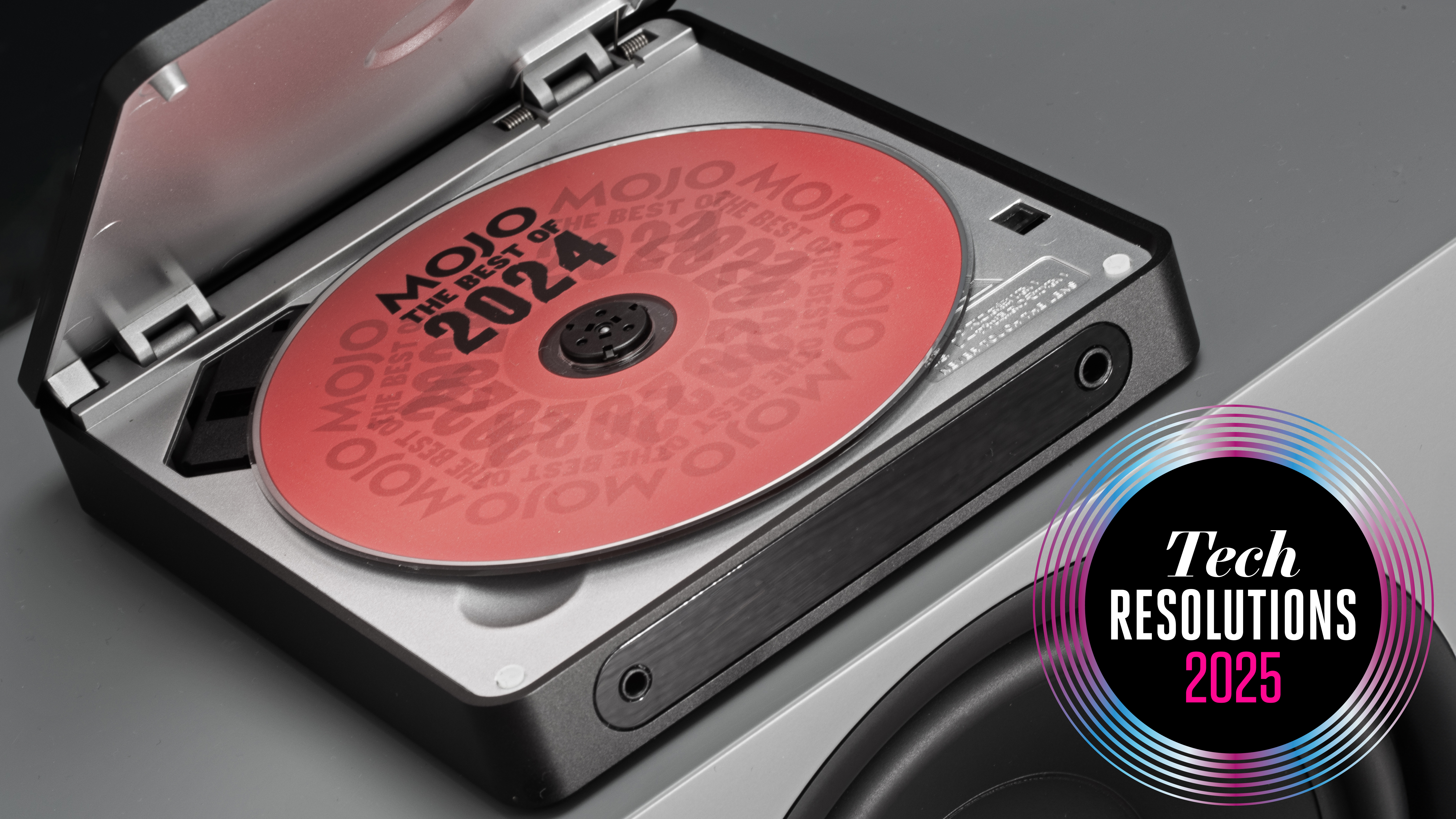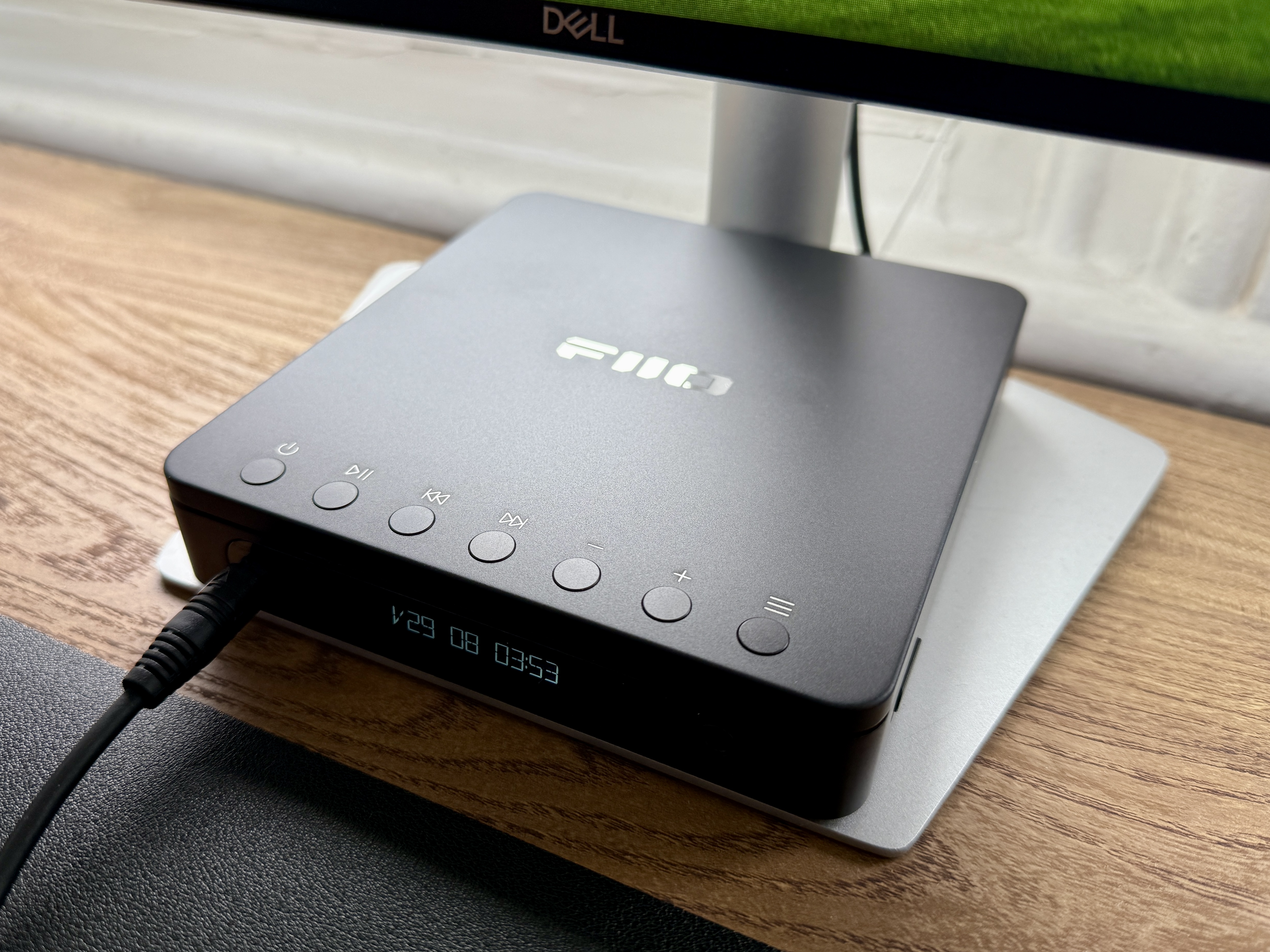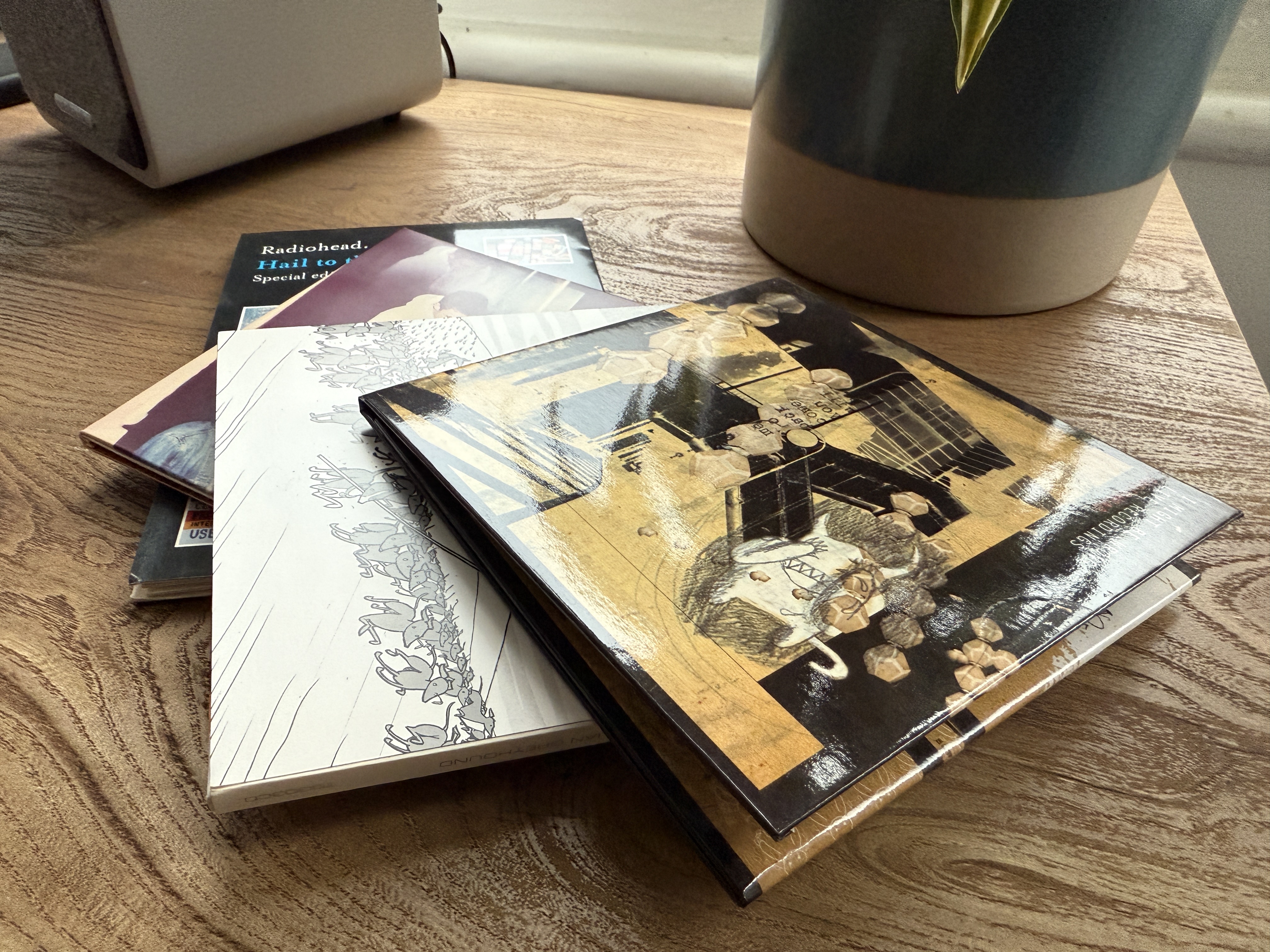
I used to own a lot of CDs. And by “a lot”, I mean a lot. Since I was a teenager in the late ‘90s a significant chunk of my disposable income went on music, but when Spotify launched in 2009 that began to slow down, until on July 29 2016 I ordered my final CD from Amazon (Drive Like Jehu’s self-titled album, if you’re interested).
I’ve been pretty much streaming-only ever since, and while I’ve purged a lot of CDs in recent years (mainly the albums I couldn't name a single song from without looking at the track-listing) there are a couple of hundred I can’t bring myself to get rid of.
Without a means to play any of them – I’d streamlined my hi-fi setup to include just a pair of Ruark MR1 Mk 2 speakers and an iFi Uno DAC connected to my disc-less MacBook Air when I moved out of London a few years ago – that seemed stupid.
But I spent a good chunk of my young adult life accumulating these shiny silver discs, some of which were acquired at gigs by obscure math-rock bands of the mid-2000s and certainly won’t be found on Spotify or Apple Music.
Even if they do now live in boxes under the stairs, existing as little more than a back-up archive to a hard drive full of ripped MP3s, they’re still part of my identity. And then one day the perfect solution dropped into my inbox.
What's in a name?

Try to buy a small, affordable CD player these days and you’ll mainly find cheap, plastic all-in-one systems made by companies called things like Pjlopj, Lvcdodvd and Gelielim (I actually made one of those up but I bet you don’t know which one).
Why was I choosing to listen to audibly inferior versions of stuff I’d spent so much time and money collecting?
In all honesty, the name FiiO isn’t much better, but the company at least has some recent pedigree when it comes to making hi-fi gear, with a number of its products earning five-star reviews right here on TechRadar. So news of its new $139 / £139 (around AU$275) DM13 CD player was music to my ears.
Here was a battery-powered CD player that’s barely any bigger than an old Sony Discman – not quite pocket-sized, but small enough to stash in a drawer when not in use – that has Bluetooth onboard so you can connect a pair of headphones, load up a copy of OK Computer and hit the streets like it’s 1997 all over again.
Mine arrived in the post just before Christmas, and its brushed metal chassis makes it vaguely reminiscent of Apple’s old Superdrive (RIP), particularly if you opt for the silver version. It can even convert CDs into MP3s if you hook it up to a computer.
I attempted to pair it with my Ruarks over Bluetooth but with its limited single-line display and very basic instruction manual, getting the two to talk to each other was like trying to change the clock on a microwave using only morse code.
Fortunately, it has standard aux and optical outputs as well, so I just dug out my box of miscellaneous cables (we’ve all got one) and went wired instead. I had created the perfect hi-fi setup for a millennial with limited space.
Don't look back in anger

1. Check Ebay for CD bargains
A copy of Oasis’s debut album Definitely Maybe will set you back the best part of $35 / £30 on vinyl, but resellers such as Music Magpie (or Discogs in the US) have eBay shops where you can pick up a CD copy for far less. Try your local charity shops, too.
2. Only buy stuff you really love
If you start buying everything on CD you’ll quickly end up with a collection that’s hard to manage and you’ll be forced to purge some of it. Spotify and the other streaming services are the perfect tool for quality control, allowing you to try before you buy.
3. Keep your CDs out of the sun
My CD collection spent over a decade of its life by a window where it would catch the evening sun. As a result a good chunk has severely faded spines and partially bleached back covers, which bothers me from a sentimental perspective rather than a resale one. Try to look after yours better.
It’s not just because I’m a hoarder who can’t let go of the past that I’m planning to spend 2025 like it’s the height of Britpop all over again (and the Oasis reunion has nothing to do with it either).
Spotify’s refusal to increase its streaming quality has been bothering me for some time, but it was only when I was listening to some of those old MP3s that I realised just how noticeable it is. Why was I choosing to listen to audibly inferior versions of stuff I’d spent so much time and money collecting?
I also rarely listen to a full album from start to finish anymore, so rather than just switching to a different digital format I figured a CD player would be the perfect way to reconnect with music all over again.
I’m not the only one who’s plotting a physical-media renaissance. Sales of CDs rose 2% in 2023 and were up again 3.2% in the first half of 2024. That small upward trend is partially down to younger generations developing an interest in owning tangible formats but not having the disposable income to spend on vinyl (apparently it all goes on snozzberry vapes).
I get that. I bought a lot of my CDs for £7 or less in shops like Fopp or Rounder Records (another RIP) in Brighton, UK and the thought of spending over £20 on just one album back then would’ve horrified me. What if it was rubbish? (Which, considering a proportion of it was mid-noughties math-rock, was fairly likely.)
With people like me offloading hordes of old CDs there are bargains to be found – and while the format isn’t as indestructible as was once claimed, the discs are often in decent nick, even if the cases and liner notes aren’t.
You can connect a pair of headphones, load up a copy of OK Computer and hit the streets like it’s 1997 all over again.
I probably won’t ditch Spotify completely. As portable as the FiiO DM13 is – connecting a pair of Bluetooth headphones presented fewer issues and it does have skip protection – my pockets are only big enough for my iPhone 16 Pro. Streaming is also unbeatable when it comes to discovering new stuff, plus I don’t have space to add significantly to my existing CD collection. My bank balance wouldn’t thank me either.
But the contents of those boxes under the stairs is going to get a chance to shine again in 2025 – and it’s all down to another little black box with a silly name.







